Snow Camping Doesn't Have to Hurt
Toboggan + woodstove = game changer
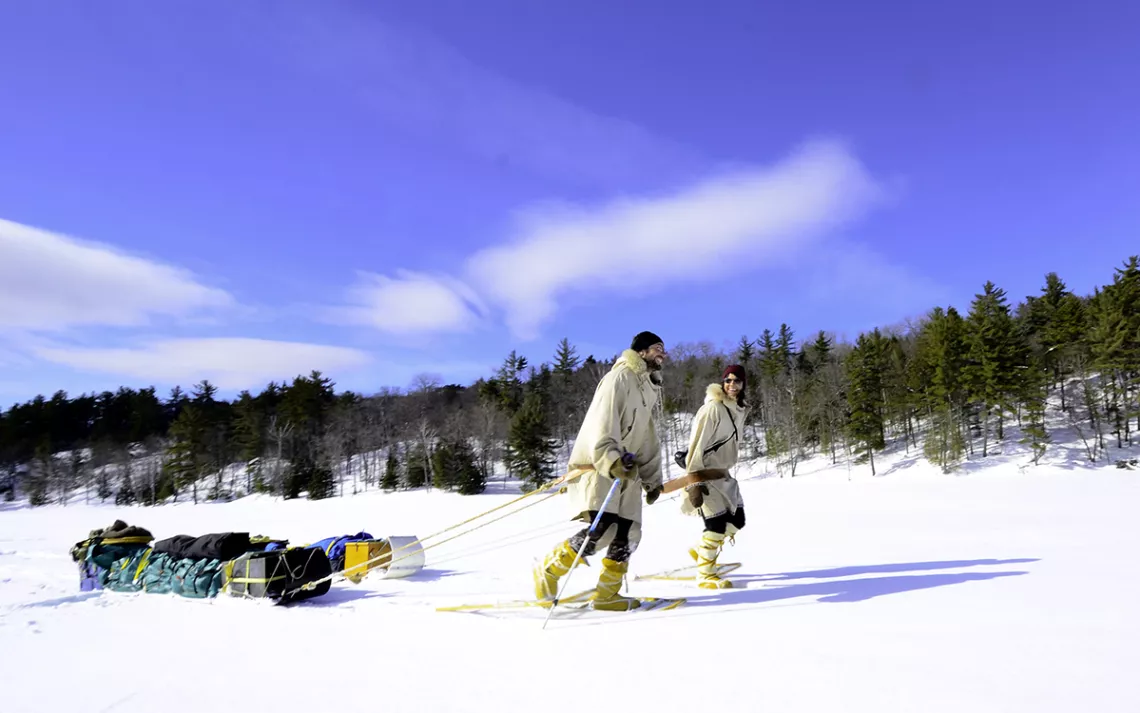
Photos by Conor Mihell
“Is everyone having a good ‘haul-iday’?”
Dave Morrone chortles at his pun as we remove the leather straps we’ve been using to drag 10-foot toboggans in Killarney Provincial Park. During the spring, summer, and fall, Killarney is one of Ontario’s most popular parks, bustling with backpackers and canoeists. But three hours ago, when I met Dave and his wife, Kielyn, on a sunny morning at George Lake, Killarney’s primary backcountry entry point, there were only nine of us. That’s probably because the lake is encased in 18 inches of ice, and the hills are buried in snow.
Before Ontario Tourism invited me to experience a different variety, my previous overnight ski and snowshoe adventures involved an overabundance of cold, dark tent time. When morning finally came, the interior of my crisp nylon tent released a shower of frost onto my sleeping bag. The experience always left me wondering why I bothered camping in the winter at all.
The Morrones had similar winter camping experiences until Dave stumbled upon The Snowwalker’s Companion, a book first published in 2000 by Maine guides Garrett and Alexandra Conover. Instead of enduring nylon tents, overloaded backpacks, and long, cold nights huddled in frosty sleeping bags, the Conovers adapted winter camping techniques that had been used for traversing the frozen waterways of the North Woods by everyone from Indigenous Ojibwa and Cree to trappers to the mail-runners of the early 1900s.
Dave signed up for a trip with the Conovers and got hooked. In 2012, he and Kielyn started Lure of the North, a business that offers guided trips, hands-on workshops, and an online store selling traditional gear and do-it-yourself kits.
This style of travel relies on a toboggan loaded down with the comforts of home and landscapes dominated by icy lakes (which have a smooth, even surface ideal for toboggan hauling), with short portages across the land between them. A winter outing is analogous to a summer canoe trip, with toboggans replacing boats and snowshoes replacing paddles.
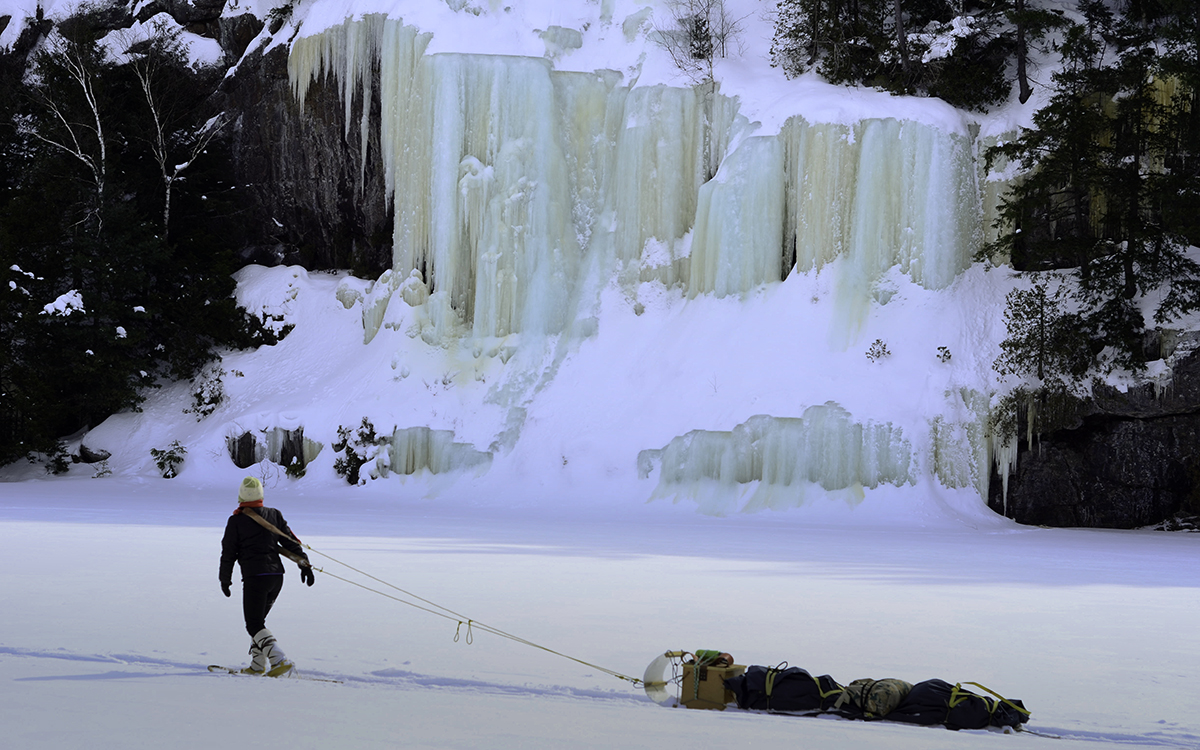
Dave assigns each of us a 10-foot toboggan, shaped in slippery plastic to mimic the slender wooden freight toboggans of the coureurs de bois, the trappers of the Canadian hinterlands in the days of the fur trade. Then he begins to pile on the gear: two sheet-metal woodstoves, two massive canvas tents, boxes of food and cooking gear, an arsenal of axes and saws, and a lethal-looking ice chisel for procuring lake water for cooking and drinking.
The equipment we’re using reflects an emerging backyard industry of handcrafted tents, stoves, toboggans, and apparel that’s grown as more and more wilderness enthusiasts rediscover the old-fashioned way of camping in the cold-weather months. Everyone on the trip has brought traditional wooden snowshoes, for better floatation in soft snow. Dave and Kielyn—who also teach snowshoe-weaving, and mocassin-, mitten- and anorak-making—are wearing svelte snowshoe moccasins, which they sewed in moosehide and sinew and lined with wool. My oversize Sorels feel like moon boots in comparison.
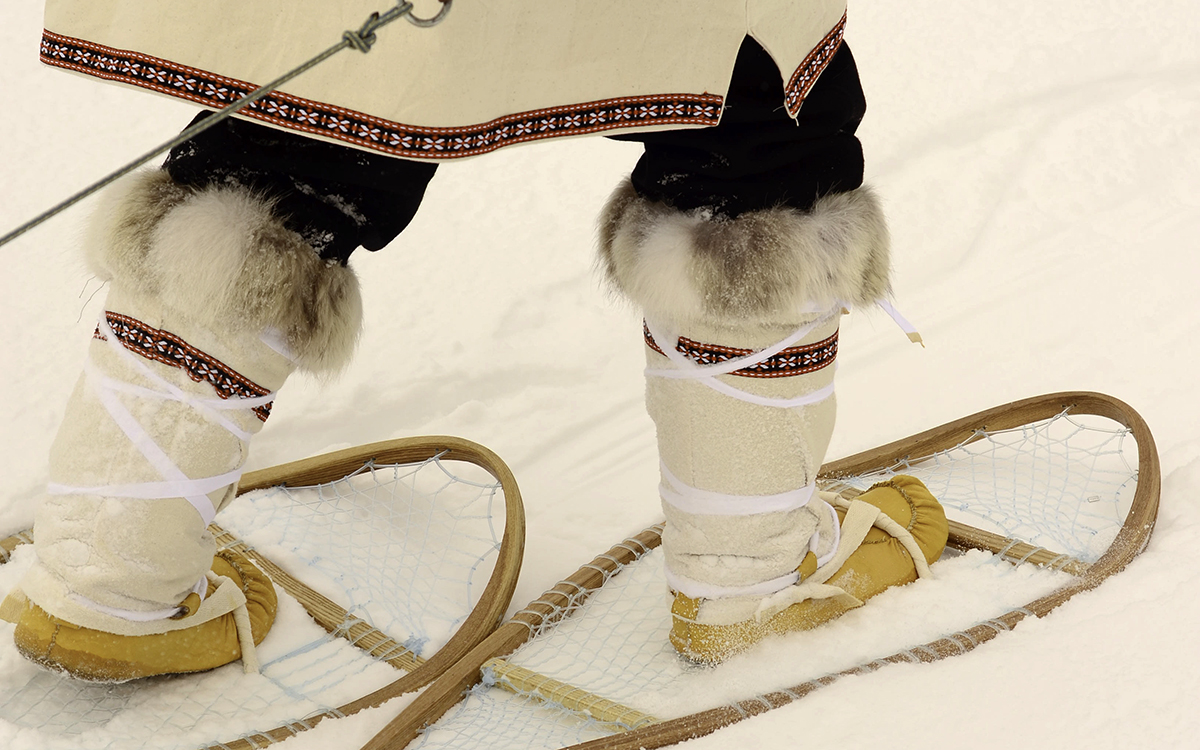
We step into our leather haul-straps and set off across the ice. I had doubted Dave’s assertion that on a perfect, hard-snow day, a single person could drag a 100-pound toboggan with ease. Now, skimming over hardpack snow, I’m a believer. There’s a bit of resistance—most noticeable in the sheltered areas where the wind hasn’t left a crust on the snow—but it isn’t difficult to maintain a walking pace. Around us, Killarney’s famous pine-cloaked quartzite hills are radiant in the bright winter sunshine.
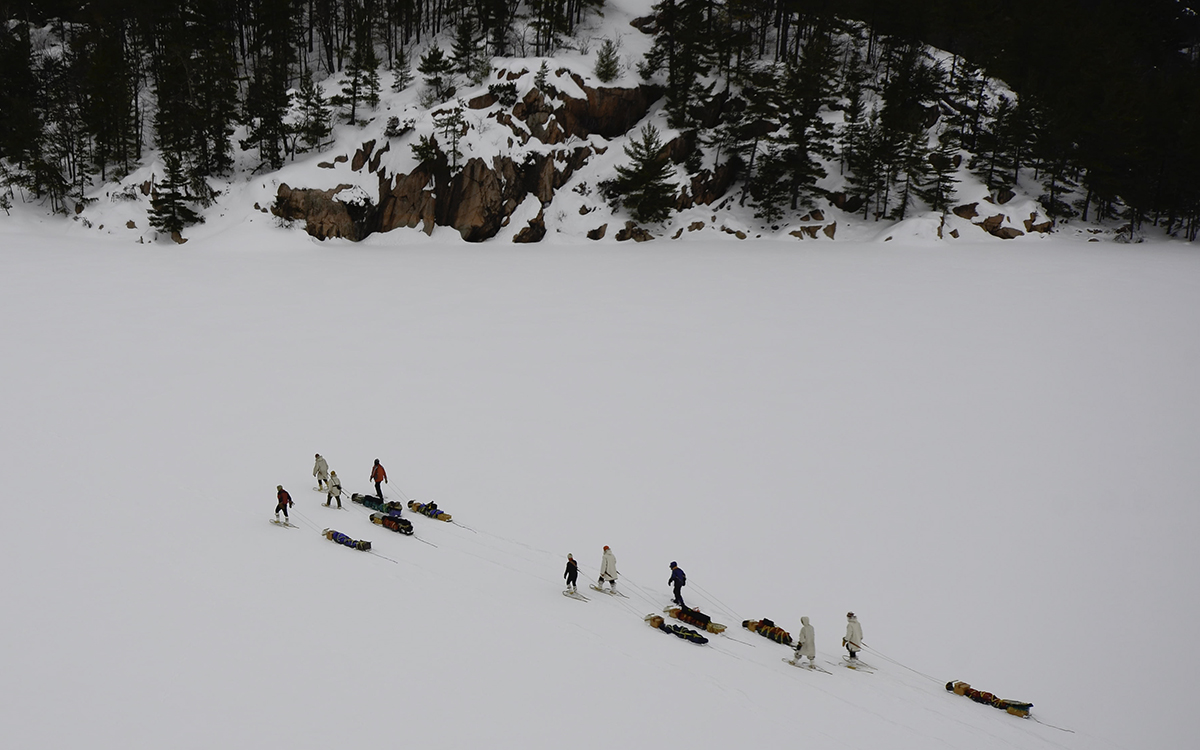
We cover five miles on our first day, arriving with plenty of time to set up camp before dark on the shore of Kakakise Creek. Camp chores, including setting up the octagonal, yurtlike tents, and gathering firewood, are tackled as a group. Both tents are pitched with shock-corded aluminum poles and equipped with woodstoves, which vent through a fire-proof panel in the canvas wall.
That evening, the outside temperature dips into the single digits. Inside the tent, I am lounging in shirtsleeves. I remember how, when winter camping, I struggled with numb fingers to light my gas stove and wolfed down meals before they too became cold.
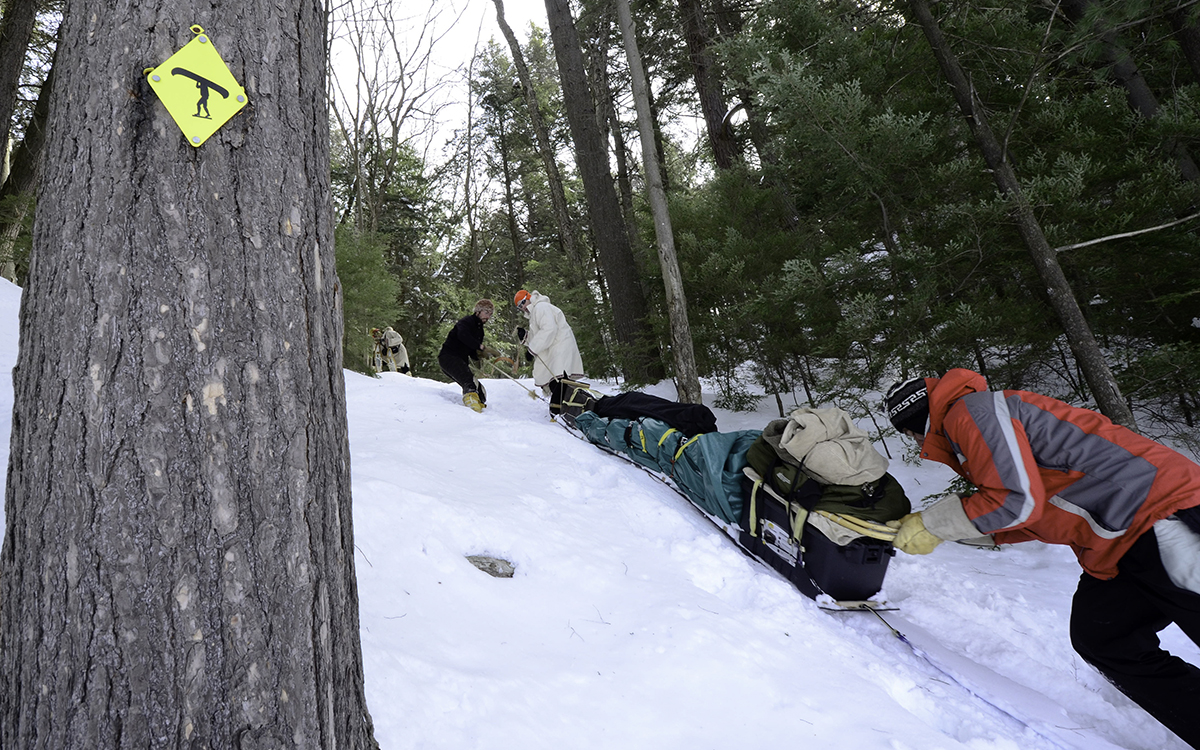
The next day I discover that snow walking isn’t always so easy. The 1,000-yard portage between Kakakise and Carlyle Lakes begins with a steep 100-foot climb then twists through the trees in tortuous, knee-deep snow. We remove our snowshoes for added traction on the ascent and work in pairs to muscle the now-leaden sleds uphill. It doesn’t get any easier when we crest the rise. My toboggan wallows and rolls in the powder and quickly assumes the moniker “The Pig.”
Still, says Dave, we got off easy. Besides this brief blip, the snow was in our favor—we have faced no deep powder on the frozen lakes and waterways that we’ve hauled our toboggans over on for most of the trip. “There’s so much variation in snow conditions,” he says. “We’ve had great hauling, but we could’ve easily had soft snow and the trip would’ve been entirely different.”
Finally, we reach the small pond where we’ll camp our second night. It’s a perfect winter tent site—rich in dead-standing timber and rimmed with deep forest and pink rocks. We harvest deadwood carefully—this style of camping puts more stress on firewood resources.
“We were tested today by that long portage,” Dave says in the tent after dinner. “But it’s getting better already.” Winter is no reason to give up camping, he says, and hauling a toboggan across lakes and portages is a satisfying workout. “A guy on one of our other trips liked to say, ‘This is how the body is supposed to feel.’”
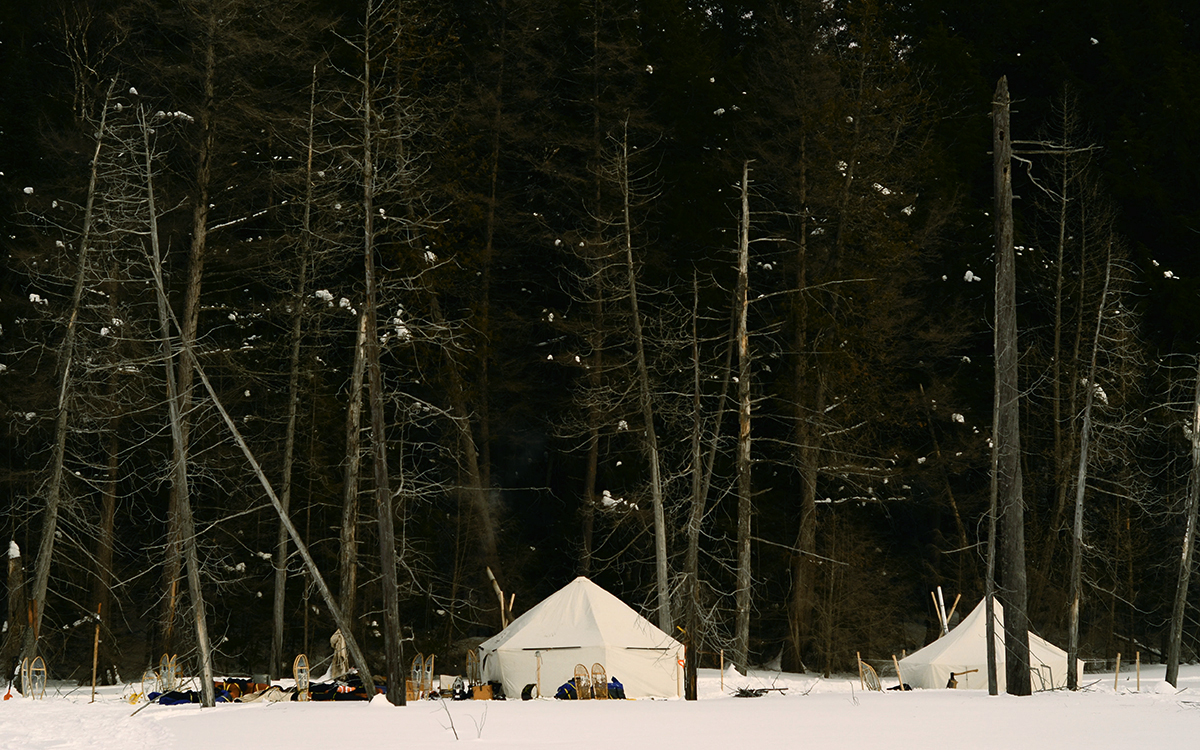
That night we stay up late, chatting in the warm tent and retreating outside to photograph the brilliant night sky. It’s our final night out, and the collective feeling of accomplishment among the group is as bright as the stars.
 The Magazine of The Sierra Club
The Magazine of The Sierra Club



